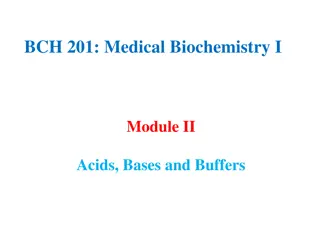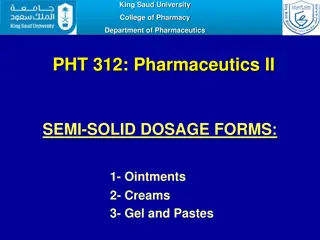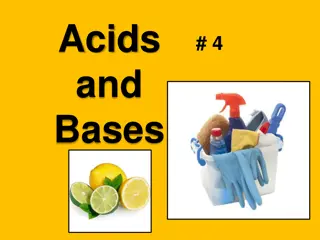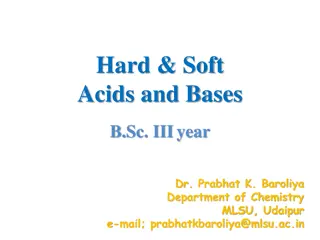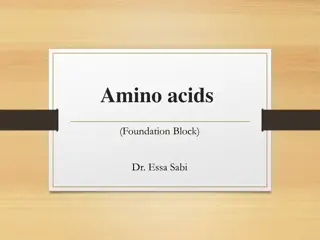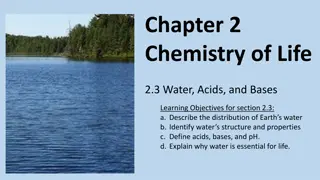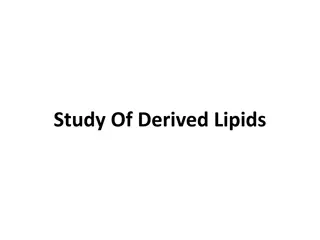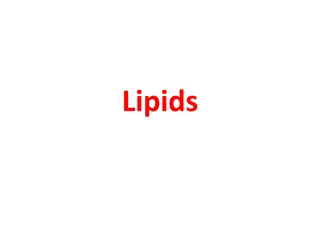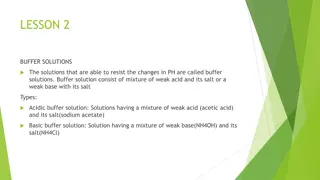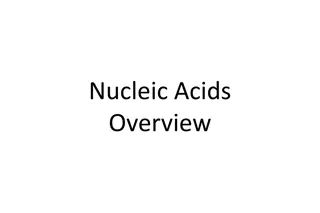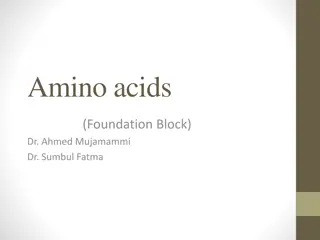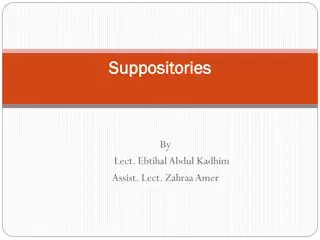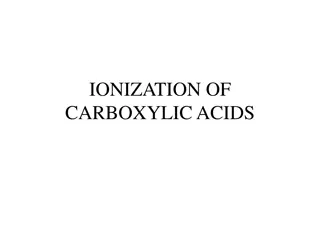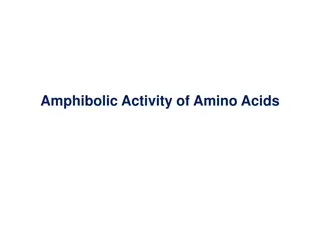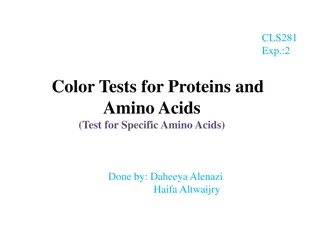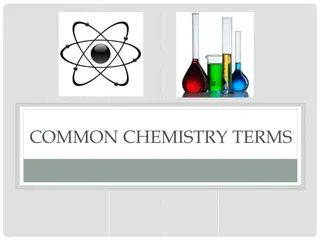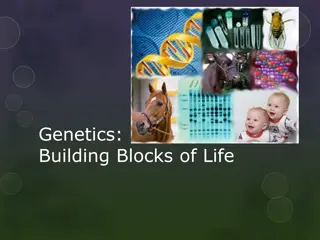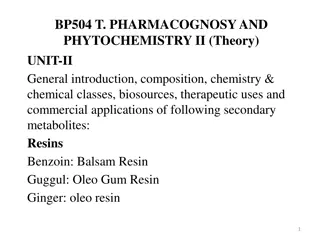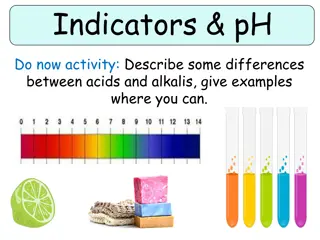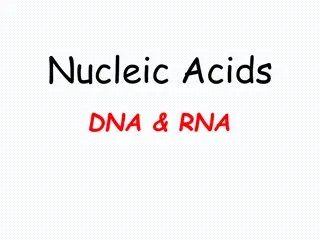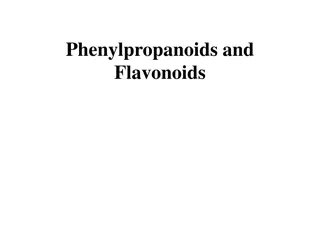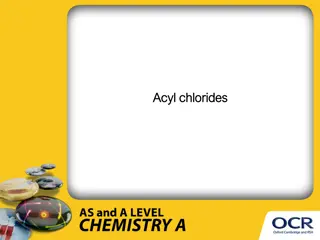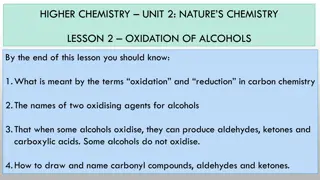Understanding Acids and Bases: Definitions and Behavior
Explore the definitions of acids and bases according to Arrhenius and Brønsted-Lowry theories, their behavior at a particulate level, and the differences between strong and weak acids and bases. Learn how to define, identify, and understand the properties of acids and bases through practical examples and discussions.
Download Presentation

Please find below an Image/Link to download the presentation.
The content on the website is provided AS IS for your information and personal use only. It may not be sold, licensed, or shared on other websites without obtaining consent from the author. Download presentation by click this link. If you encounter any issues during the download, it is possible that the publisher has removed the file from their server.
E N D
Presentation Transcript
Living By Chemistry SECOND EDITION Unit 4: TOXINS Stoichiometry, Solution Chemistry, and Acids and Bases
Lesson 85: Pass the Proton Acid-Base Theories
ChemCatalyst Which of these four solutions conduct electricity: 0.10 M HCl (hydrochloric acid), 0.10 M CH3COOH (acetic acid), 0.10 M NaCl (sodium chloride), 0.10 M C12H22O11(sugar)? Explain.
Key Question How are acids and bases defined?
You will be able to: define Arrhenius and Br nsted-Lowry acids and bases explain the behavior of acids and bases on a particulate level explain the difference between strong and weak acids and bases
Prepare for the Activity Work in groups of four.
Discussion Notes Acids are substances that add H+ to solution. Bases are substances that add OH- to solution. Neutral substances do not add H+ or OH- to solution. The definitions of acids and bases have changed over time.
Discussion Notes (cont.) Arrhenius Definition of Acids and Bases: An acid is any substance that adds hydrogen ion (H+) to solution. A base is any substance that adds hydroxide ion (OH-) to solution.
Discussion Notes (cont.) Br nsted-Lowry Definition of Acids and Bases: An acid is a proton donor. A base is a proton acceptor. Acids and bases that break apart (dissociate) completely in solution are called strong acids and strong bases. Acids and bases that do not dissociate completely in solution are called weak acids and weak bases.
Wrap Up How are acids and bases defined? According to the Arrhenius definition, an acid is a substance that adds hydrogen ions, H+, to an aqueous solution. According to the Arrhenius definition, a base is a substance that adds hydroxide ions, OH , to an aqueous solution.
Wrap Up (cont.) Some substances add OH by removing H+ from water. Br nsted and Lowry define an acid as a proton (H+) donor and a base as a proton (H+) acceptor. Strong acids and strong bases dissociate completely into ions, while weak acids and weak bases do not.
Check-In Which substances do you expect will conduct electricity: hydrocyanic acid, HCN; magnesium hydroxide, Mg(OH)2; methanol, CH3OH? Explain your thinking.


